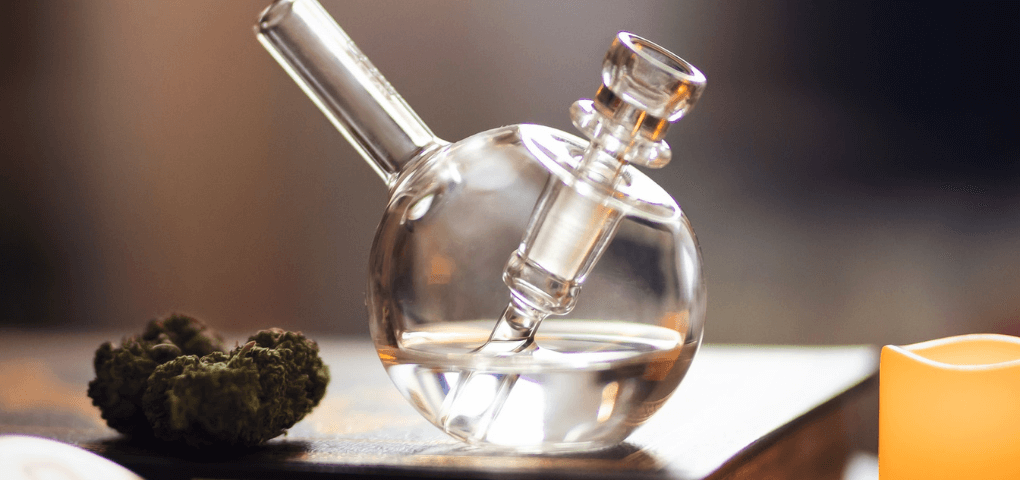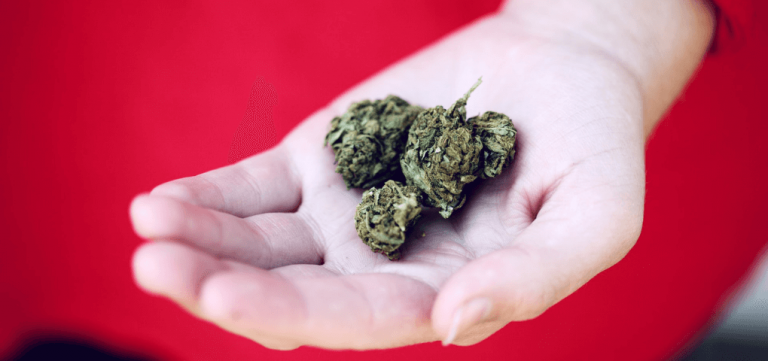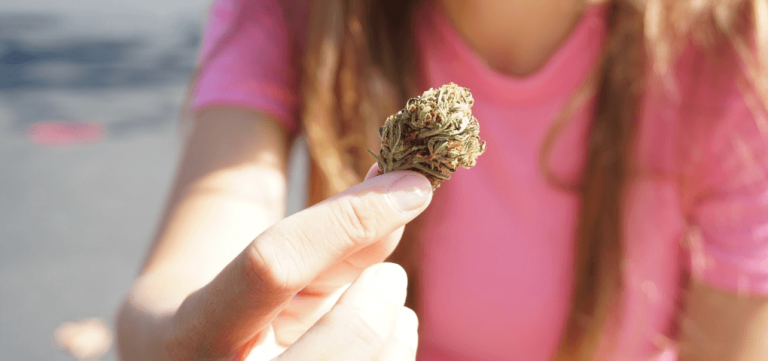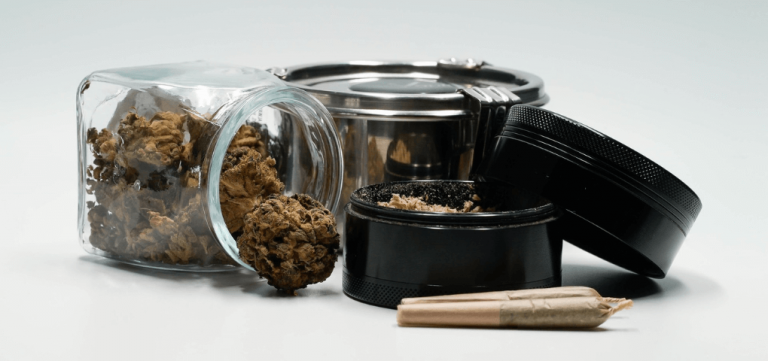
22 Appalling Marijuana Usage Stats
Posted on | by Jenifer Kuadli
Cannabis use has been part of humanity’s daily life for thousands of years. The consumption of the substance only became illegal when US President Richard Nixon signed into law the Controlled Substances Act.
Since the criminalization of the substance, there have been many public debates on whether consuming it provides more benefits than harm.
This article underscores the latest marijuana usage stats to determine how much cannabis the world consumes and if it has any benefits or ill effects.
Top Astounding Facts on Marijuana Use (Editor’s Choice)
- Researchers link exposure to marijuana use at a young age to a decline in intelligence quotient.
- Marijuana use during pregnancy can lead to health issues and brain development problems for the baby.
- Americans spent $18.3 billion on cannabis use in 2020.
- Using cannabis can increase a person’s risk of developing schizophrenia.
- The spread of the Covid-19 virus and the resulting lockdown protocols across the US led to increased cannabis consumption.
- Global cannabis revenue is expected to reach $42 billion by 2024.
- The legalization of recreational marijuana doesn’t encourage marijuana use among adolescents.
Marijuana Usage Facts
1. Researchers link exposure to marijuana use at a young age to a decline in intelligence quotient.
(Science Daily)
Despite the prevailing public notion that cannabis is harmless, the latest research on marijuana use shows some discouraging facts and statistics on cognition.
Researchers compared the intelligence quotient of individuals exposed to marijuana to those who didn’t use the substance.
Over time, they discovered that individuals who had used cannabis during adolescent years experienced a decline of approximately two intelligence points compared to those who had zero exposure.
This can lead to poor performance in school and at work.
2. Marijuana use during pregnancy can lead to health issues and brain development problems for the baby.
(CNN)
Researchers are concerned about the growing number of pregnant women who use cannabis in child-bearing stages.
This unease isn’t without valid reason because marijuana use during pregnancy shows troubling statistics.
Past studies show that marijuana use during pregnancy is linked to birth weight, attention issues, behavioral problems, and cognitive difficulties among children.
Further, research suggests that women who use cannabis during pregnancy are 1.5 times more likely to give birth to a child with autism.
3. One in ten people who use marijuana will develop an addiction to the substance.
(SAMHSA)
Most researchers argue on several facts about marijuana use, especially if it concerns risks and benefits. However, most researchers agree on one thing—marijuana can be addictive.
The amount and potency of tetrahydrocannabinol, the psychoactive ingredient in marijuana, has steadily climbed over the last decades.
This increase in this hallucinatory component is what makes marijuana so addictive. Recent statistics suggest that one in ten people who use cannabis will become addicted to the substance.
The figure is even more disturbing for adolescents who start young. One in six teenagers who start using marijuana before the 18th year will become addicted to the substance.

Marijuana Usage Statistics
4. Americans spent $18.3 billion on cannabis use in 2020.
(Leafly)
While most industries experienced massive losses in sales because of lockdown protocols and stay-at-home advisories, the cannabis industry thrived.
This is because governors in different states have declared the substance an essential product. In response, dispensaries and retail stores offered online buying of the substance and curbside pickup.
Customers reacted positively by hoarding more items.
Recent marijuana usage stats show a 71% increase in adult use of cannabis in 2020 compared to 2019 records.
This significant increase in consumption resulted in additional purchases that reached $18.3 billion—$7.6 billion more than the sales of 2019.
5. The District of Columbia has the highest percentage of marijuana usage among adults in the US.
(Statista)
According to the latest statistics on marijuana usage per state, the District of Columbia holds the highest percentage of adult marijuana use.
About 27.42% of adults in the region have admitted to using marijuana within the survey year.
6. Using cannabis can increase a person’s risk of developing schizophrenia.
(MDedge)
While many people believe that marijuana use carries several benefits, clinicians are concerned about the risks it brings.
Some of the dangers include developing mental health issues like psychosis and schizophrenia. These negative impacts are evident in some statistics on marijuana usage and mental health problems.
For example, researchers found that cannabis use accounts for 8% to 14% of schizophrenia cases.
And those at greater risk of developing this condition are adolescents who start consuming the substance early, with greater frequency, and with higher levels of tetrahydrocannabinol.
7. Marijuana is the most widely used federally illegal substance in the US.
(CDC)
Statistics on marijuana use show that 18% of Americans used cannabis at least once in 2019, the year for which the most recent data is available.
That means approximately 48.2 million Americans consumed the substance with psychoactive properties. It’s not surprising, then, that cannabis is considered the most commonly used Schedule 1 substance in the US.
8. Individuals who start using cannabis at an early age are at greater risk of developing marijuana use disorder.
(CDC)
According to the CDC drug fact sheets, approximately three out of ten marijuana users suffer from marijuana use disorder.
The risk of developing this mental health condition is even more significant when people start using the substance prior to age 18.
9. Fewer people in the US have tried marijuana than alcohol or tobacco.
(Pew Research Center)
Statistics on marijuana use in America reveal that 46% of US adults have tried cannabis. This percentage might seem significant, but it’s still lower than the percentage of Americans who have been attempting tobacco and alcohol.
About 61% of Americans say they’ve tried tobacco at least once, and approximately 80% confirmed they consumed alcohol.
10. Less than a quarter of Americans who have tried marijuana continue to use the substance.
(Pew Research Center)
While marijuana usage stats report that close to half of the American adult population have tried marijuana, only a few continue to consume it.
In fact, only 18% of those who admitted to trying the substance continued to use it in the past year. And, only 11% used the substance during March 2021.
11. The spread of the Covid-19 virus and the resulting lockdown protocols across the US led to increased cannabis consumption.
(Statista)
Many people feared that the statistics of marijuana use in America following the spread of the Covid-19 virus and lockdown measures could lead to drastic increases. This concern isn’t senseless.
About 40% of millennial marijuana users say they planned to increase their consumption during the coronavirus pandemic.
This planned increase in consumption was reflected in sales at the onset of the pandemic. For example, in California, one of the states where medical and recreational use is legal, sales have increased by 159%.
12. The medical marijuana industry has strong public support.
(Statista)
Researchers expect the medical marijuana use statistics will continue to grow. This presumption is based on industry growth in the last decade and the consistent public support for the use of medical marijuana.
In fact, public approval for the medical use of cannabis has remained above 77% since 2011.
13. Approximately 40% of Americans use cannabis to cope with pandemic-induced stress and burnout.
(Leafly)
Almost a quarter of Americans reported that the Covid-19 is the primary cause of their stress and burnout.
Statistics of marijuana use show that 40% of Americans confessed to using cannabis to cope with stress and burnout. Meanwhile, 37% confirmed they used cannabidiol to handle these pandemic-induced issues.
14. Marijuana usage increases by 13% on average at the end of each year compared to the start of that year.
(ScienceDaily)
According to national marijuana use statistics, usage of the substance increases throughout the year, with the lowest consumption rate at the beginning of a year.
Data show a consistent trend where consumption increases by 13% at the end of a year compared to the consumption rate at the beginning of that same year.
Researchers note that this seasonal trend in usage is the same for almost all groups, except teenagers. For them, the peak of use happens in the summer and declines in the fall season.

Teenage Marijuana Use Statistics
15. Marijuana use among teenagers can result in poor academic performance for many students who use the substance.
(The Recovery Village)
Some researchers link the current and past use of marijuana to lower educational achievements.
And the recent statistics of teenage marijuana use concerning academic performance provide evidence to this hypothesis.
For example, only 10% of high school students who earned A’s in their grading marks consumed cannabis. In contrast, about 48%, or almost half of students with D’s and F’s in their academic marks, used marijuana.
16. One recent survey showed that one-third of eighth-graders believe it’s easy for them to gain access to marijuana.
(Verywell Mind)
Marijuana usage statistics show that over 48 million Americans over the age of 12 used cannabis last year.
This overwhelmingly high figure shouldn’t come as a surprise when it’s easy even for teenagers to gain access to the substance.
A survey among adolescents shows that almost one-third of eighth-graders believe that coming into possession of the substance is relatively easy.
Meanwhile, over 60% of tenth-graders and more than 75% of twelfth graders believe the same.
17. The percentage of teenagers who consider marijuana harmful dropped by as much as 40% in 2021.
(UNODC)
The United Nations Office on Drugs and Crime the current marijuana usage trends result from the disconnect between public perception and actual risks.
Despite years of research that point to the health problems caused by cannabis, the percentage of adolescents who believe cannabis is harmful declined by 40%.
This decline in rate is an interesting figure considering the number of psychoactive ingredients in most marijuana products quadrupled in recent years.
18. The legalization of recreational marijuana doesn’t encourage marijuana use among adolescents.
(Forbes)
There’s no evidence to support the apprehensions of some people that marijuana legalization will encourage adolescents to use cannabis.
In fact, marijuana usage statistics after legalization show a 16% decline in the frequency of use among teenagers in some states.
Some researchers believe marijuana legalization paved the way for limited accessibility of the substance because of the regulation.

Global Stats on Marijuana Use
19. More than half of Canadian cannabis users increased their consumption because of the coronavirus pandemic.
(Centre for Addiction and Mental Health)
Studies suggest a strong link between the rising statistics for marijuana use in Canada and the first wave of the coronavirus pandemic.
The spread of the Covid-19 virus has left many Canadians struggling with psychosocial issues. A significant portion of the population struggled with social isolation, boredom, stress, and anxiety about the future.
As a result, many Canadian marijuana users turned to cannabis to alleviate their struggles. In fact, about 52% of the population admitted to using marijuana more than they usually did pre-pandemically.
20. Based on the latest stats on marijuana use, approximately 200 million people consume cannabis worldwide.
(UNODC)
As of the latest count, the number of people consuming cannabis has reached roughly 200 million worldwide.
That’s about 4% of the global population. According to the United Nations Office on Drugs and Crime, this figure is an 18% increase from the number of cannabis users over a decade ago.
21. Marijuana is still the most consumed drug in Europe.
(Statista)
According to recent statistics on marijuana usage in the European Union, marijuana is the most commonly used drug in the region.
Approximately 27.2% of the population have used cannabis at least once in their lifetime. And about 7.7% used the substance in the previous year.
In contrast, only 1.2% of Europeans used cocaine last year. And only 0.9% and 0.7% used ecstasy and amphetamines during the previous year.
22. Global cannabis revenue is expected to reach $42 billion by 2024.
(PR Newswire)
Researchers expect the rising marijuana use stats worldwide will lead to significant growth for the industry despite the pandemic.
When revenues of most shops in other industries took drastic dips, the cannabis market prospered.
In addition, dispensaries started to hire additional workers amid the crisis in response to customers’ panic buying. Further, the whole industry is poised to rake in $42.7 billion in revenue by 2024.
Conclusion
While excessive consumption of marijuana isn’t fatal, the statistics about marijuana use show that using the substance isn’t harmless.
For instance, some studies show that frequent consumption of cannabis during the teenage years increases the risk of developing schizophrenia.
In addition, some regular marijuana users since their adolescent years also exhibited lower intelligence quotients over time.
Until researchers find conclusive proof that marijuana is safe to consume under specific circumstances, users should exercise caution and moderation.
FAQ
Marijuana is the most commonly used psychoactive substance in the world.
So it’s not surprising that approximately 200 million people consume the substance worldwide, even if it’s considered illegal in several countries and regions. That’s about 4% of the entire global population.
In the US, cannabis is also the most consumed illicit substance. About 48 million Americans tried marijuana at least once.
Despite being a federally illegal substance, marijuana is still the most commonly used substance in the US. For this reason, you can find cannabis users in almost all age groups and demographics.
According to recent statistics, individuals between the age of 18 and 29 have the highest share of marijuana users. Data suggests that almost a quarter of this age group currently smokes the substance.
All states in the US reported a certain percentage of marijuana consumption for some of their citizens. The rates range from 11.13% to 27.42%.
According to statistics, the District of Columbia has the highest percentage of marijuana consumption, with 27.42% of its population using the substance.
Meanwhile, South Dakota had the lowest rate of marijuana users at 11.13% of the population.
Synthetic marijuana has become a popular substance among young adolescents.
According to statistics, synthetic marijuana is the third most widely used substance among eighth-graders and the second most consumed among tenth and twelfth graders.
The most recent nationwide data on synthetic cannabinoids show that 1.6% of eighth-graders used synthetic marijuana in 2020.
At the same time, 2.5% and 2.4% of tenth and twelfth graders used the substance during the same year.
Spice marijuana is a form of synthetic cannabinoid. Manufacturers produce this type of substance-using chemicals that mimic the effects of natural marijuana.
But unlike natural cannabis, this synthetic drug is harmful and at times fatal. For this reason, some countries have moved to make the chemicals in synthetic cannabinoids illegal.
Unfortunately, many manufacturers work around these laws by changing the chemicals they use and the formula.
Further, most individuals who consume synthetic marijuana often consume it together with other kinds of drugs. As such, countries currently don’t have artificial marijuana usage stats on record.